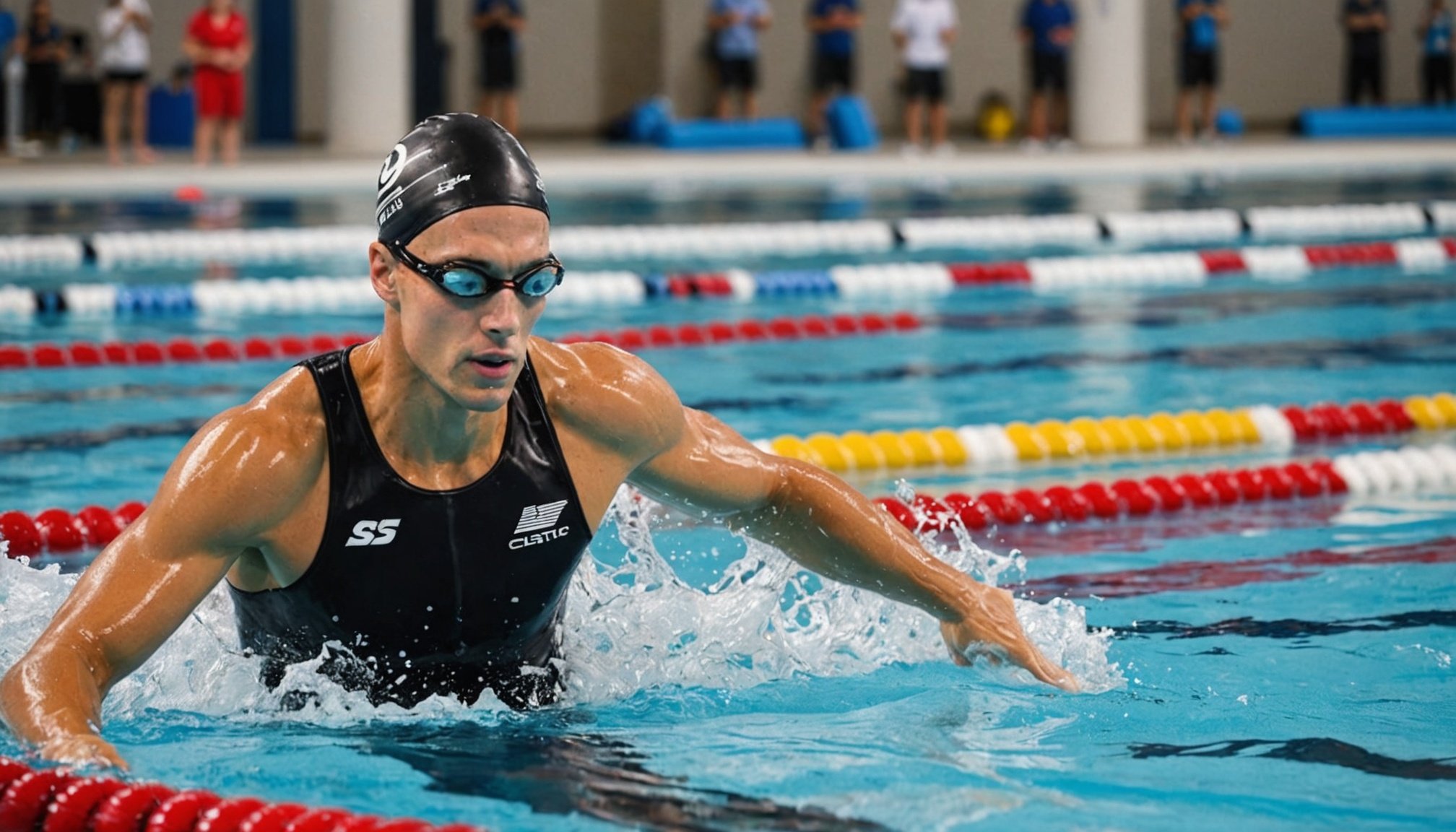Importance of Stroke Efficiency
The concept of stroke efficiency is central to swimming performance. It’s essentially the measure of how effectively a swimmer propels through the water using their strokes. In competitive swimming, achieving a high level of stroke efficiency can distinguish elite swimmers from the rest.
Stroke efficiency affects a swimmer’s speed, endurance, and overall performance. It allows a swimmer to cover more distance per stroke, reducing energy expenditure and leading to faster times. For swimmers of all levels, improving stroke efficiency can result in more effective training sessions and quicker recovery, contributing to better overall health. Benefits include:
Also read : Mastering swim strokes: how video analysis transforms performance enhancement for swimmers
- Enhanced performance with less effort
- Increased speed and endurance
- Decreased risk of injury
Several key factors influence stroke efficiency. Swim technique, body position, and breathing are crucial aspects. Correct body alignment minimizes drag and maximizes propulsion. Effective breathing ensures swimmers maintain optimal energy levels. Incorporating technical drills in training can address these elements, helping swimmers fine-tune their strokes. Drills focusing on technique consistency, such as catch and pull exercises, can significantly boost stroke efficiency. Understanding and working on this fundamental aspect of swimming can transform a swimmer’s abilities, enabling them to achieve their personal bests consistently.
Must-Try Technical Drills
Enhancing your swimming technique requires focused effort on technical drills. These exercises are essential for stroke improvement and overall efficiency.
This might interest you : Mastering wave dynamics: how balance boards elevate training for professional surfers
Drill 1: Single Arm Swimming
Single Arm Swimming involves isolating one arm at a time while maintaining body balance and movement. This technical drill significantly boosts stroke improvement by enhancing arm strength and stroke symmetry. Swimmers execute this drill by keeping one arm extended in front while the other arm completes a full stroke cycle. This isolation helps identify and correct asymmetries.
To maximize benefits, ensure you engage your core to maintain stability, and avoid over-rotating your torso. Missing these elements often leads to inefficiencies in stroke execution.
Drill 2: Catch-Up Drill
The Catch-Up Drill aids in synchronising your strokes and refining body position. Swimmers perform this technical drill by initiating the next stroke only when the recovering hand touches the stationary hand in front of the head. This fosters greater coordination.
A real-life example of effectiveness is how competitive swimmers often perfect their streamlining techniques through this drill, leading to significant stroke improvement.
Drill 3: Sculling
Sculling focuses on hand movements in the water to improve the feel of the water and propulsion. Executed by creating a figure-eight motion with your hands while maintaining a streamlined body position, sculling fine-tunes a swimmer’s tactile response.
Effective tips include emphasising wrist action and relaxed hand movements. This drill tends to enhance your ability to interact with water dynamically, amplifying stroke improvement.
Additional Drills for Refinement
To refine your swimming techniques, incorporating advanced techniques can be significantly effective. This section will explore drills designed to enhance your stroke refinement and elevate your skills.
Drill 4: Vertical Kicking
Vertical kicking is an excellent exercise for strengthening your core and legs. To execute, position yourself vertically in the water with a straight body and arms crossed over your chest. Begin kicking with straight legs, focusing on balance and control. This drill enhances leg strength and body alignment, critical for improving overall swimming balance. Practising this regularly in short bursts can improve your stroke refinement effectively.
Drill 5: Swimming with Fins
Swimming with fins can drastically boost your kick strength. Start by selecting fins that suit your experience level and gradually integrate them into your routine. Fins aid in improving foot flexibility and kick efficiency. However, alternating between swimming with and without fins will ensure you don’t become overly reliant on them, thus maintaining your natural stroke refinement.
Drill 6: Band Training
Band training refines technique by reducing reliance on natural buoyancy. Wrap a resistance band around your ankles and swim using only your arms. This drill requires significant core engagement to maintain body position, focusing on upper body strength and stroke refinement. Incorporate bands into your training regimen to bolster swimming strength and technique.
Analyzing Performance Improvements
Understanding performance improvements in swimming requires a thorough performance analysis. This process involves tracking efficiency metrics to ensure swimmers are progressing effectively. It’s about collecting and evaluating data regarding various aspects of a swimmer’s training routine. Efficiency metrics often include stroke count, lap time, and overall endurance, which together form the basis for identifying areas needing enhancement.
Swimmer testimonials offer valuable insights by showcasing personal journeys of improvement. These firsthand stories highlight how specific training adjustments have led to improved stroke efficiency. For example, many swimmers find that focusing on technique, rather than speed, during practice drills significantly boosts their performance. Swimmer testimonials can inspire and guide others by providing real-life examples of successful strategies and outcomes.
Collecting feedback from drills is another crucial component in tracking performance enhancements. Coaches can utilize video assessments and direct athlete input to refine techniques continuously. This feedback loop ensures that modifications are based on concrete data, leading to more targeted and effective training interventions.
Additionally, performance analysis must be an ongoing practice, adapting as athletes change and improve. With a structured approach to tracking metrics and leveraging swimmer feedback, programs can be tailored to maximise swimmer potential effectively.
Visual Aids and Resources
Incorporating visual aids into your swimming practice can significantly enhance your understanding and execution of technical drills. Seeing movements performed correctly through swimming visuals allows learners to internalise proper techniques, providing a clear blueprint to follow in the water. Visual aids help bridge the gap between theory and practice, making complex concepts more accessible.
Recommended Video Tutorials
For those seeking instructional videos, numerous online platforms offer high-quality tutorials tailored to various swimming drills. Websites like SwimSmooth.com or popular YouTube channels hosted by professional coaches provide step-by-step guidance. These videos often include slow-motion sequences and detailed explanations, which are particularly useful for visual learners.
Additional Resources
Beyond videos, resource guides can be invaluable for honing stroke efficiency. Comprehensive guides offer in-depth strategies and scientifically-backed methodologies to improve performance. They often include diagrams and structured training plans aligned with your skill level. Access to these resources ensures you have a well-rounded approach to mastering the sport, complementing the visual learning aspects with detailed written instruction.
Integrating a mix of instructional videos and resource guides into your training regimen empowers you to achieve precise and efficient swimming techniques. Adopting these tools can transform how you approach your swimming practice, making learning both effective and enjoyable.











